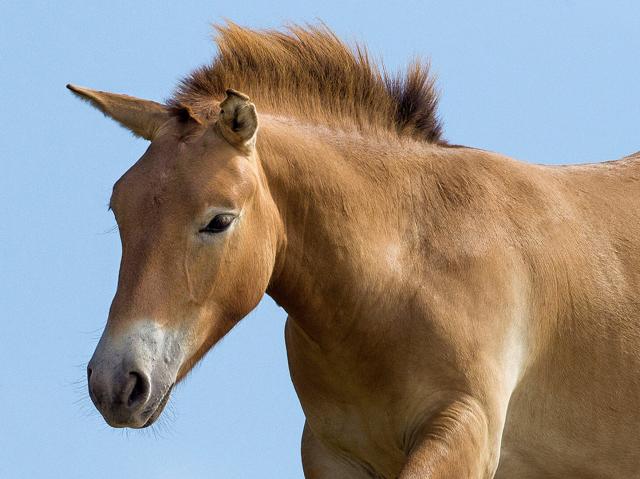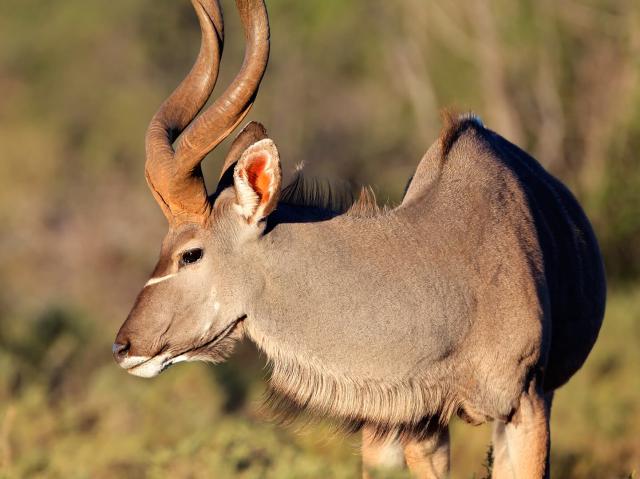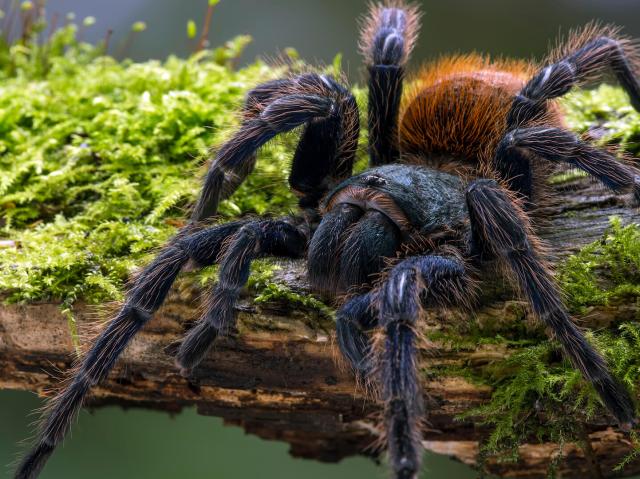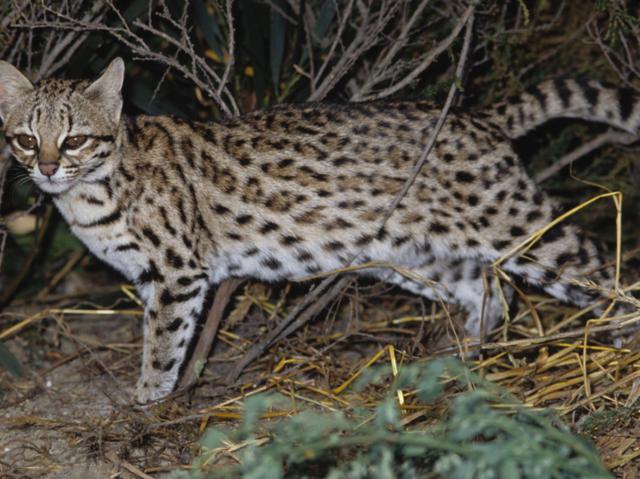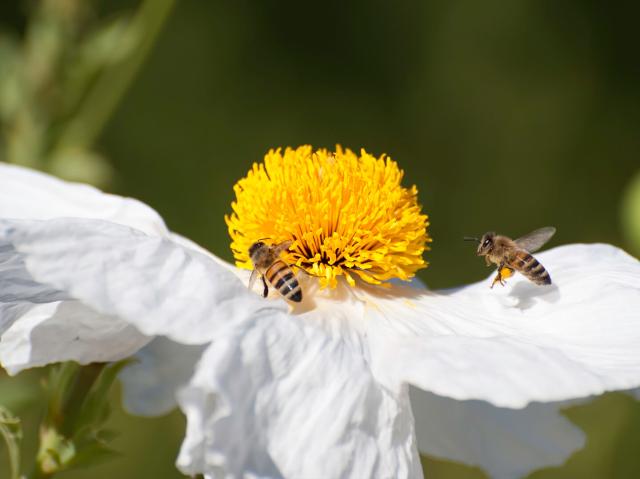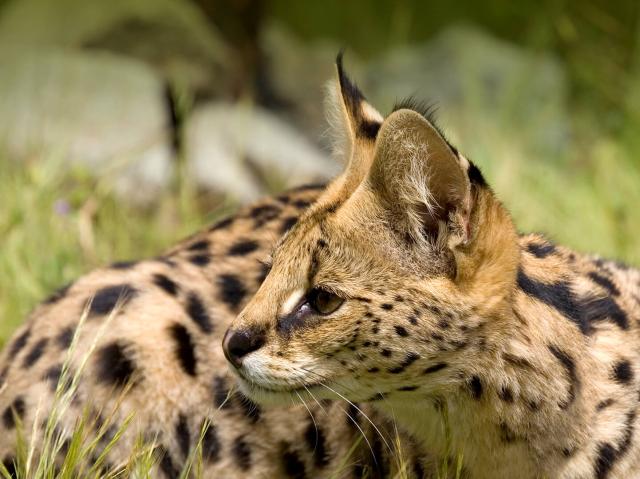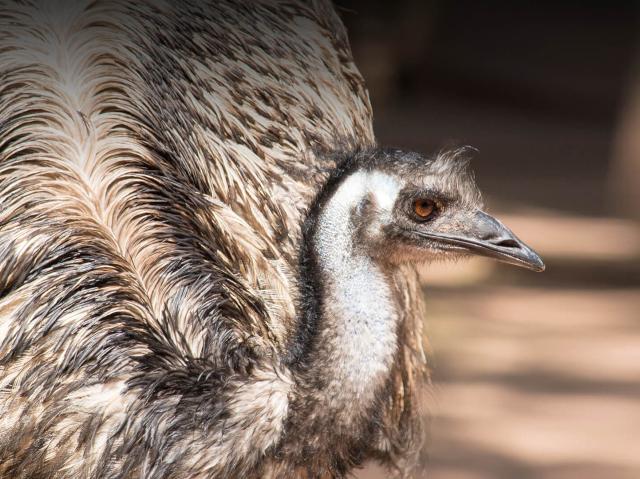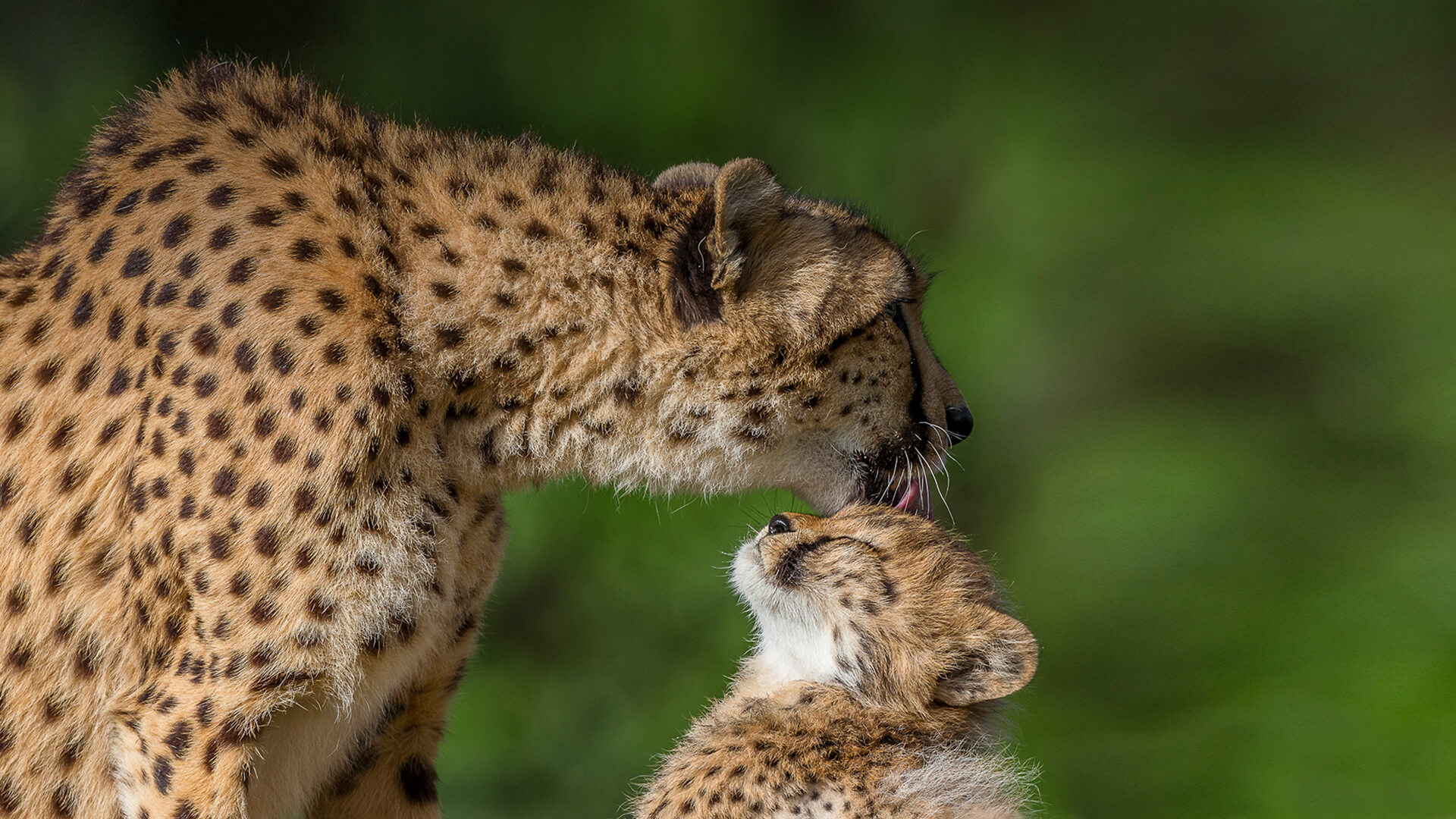
Cheetah

- Class: Mammalia (Mammals)
- Order: Carnivora
- Family: Felidae
- Genus: Acinonyx
- Species: jubatus

ABOUT
If ever an animal was born to run, it’s the cheetah. As the fastest land mammal, cheetahs have unique adaptations that help them run very fast for short distances. This helps them catch prey with unmatched speed.
Cheetahs primarily live in the eastern and southern ranges of Africa south of the Sahara Desert, with small populations in North Africa and Iran. They are neither solitary nor social but rather a little of both. Females live independently except when they have young. Males may live independently, but related males, usually brothers, live in small groups called coalitions. Males grow larger than females and have a “mane” on their shoulder area. Cheetahs live peaceably except at breeding time, when males often fight over females. Cheetahs hunt alone and don’t have group behaviors like lions do.
Long and lanky, cheetahs are the sprinters of the cat world. Their bodies are uniquely adapted to run very fast for short distances, allowing them to catch prey that other big cats can’t get. A cheetah’s ability to run starts with its flexible spine, which allows its front legs to stretch far forward on each stride. Hard and sharp claws act like cleats, providing great traction when running. A cheetah can retract its claws a bit, but the fleshy sheaths that protect the claws of most cats are absent in cheetahs. Most of their claws are exposed, so they don't stay sharp like those of other cats.
A small, cone-shaped piece of bare skin on the back of each front leg serves as a brake. A cheetah's long tail acts as a rudder to help maintain direction, and its enlarged nostrils, lungs, and heart are uniquely adapted to that help a cheetah exert bursts of intense energy.
While running, a cheetah covers 20 to 22 feet (6 to 6.7 meters) in just one stride, about the same distance as a racehorse. But a cheetah is so much faster—the fastest racehorse runs 43 miles per hour (69 kilometers per hour), while a cheetah can run up to 70 miles per hour (112 kilometers per hour). To reach that speed, a cheetah is off the ground more than half of its running time!
Chasing prey takes enormous energy. Once caught, a cheetah holds its prey with a strangling bite to the neck. The cheetah pants intensely, and its body temperature can reach as high as 105 degrees Fahrenheit (41 degrees Celsius). It takes about 20 minutes for its breathing and temperature to return to normal, the same time it takes for the prey to suffocate. Cheetahs have smaller teeth and larger nasal passages than other big cats, which may help them take in more air during the recovery period after a sprint.
HABITAT AND DIET
Cheetahs live in parts of Africa and a small population lives in Iran. They prefer grasslands and open plains where they are well camouflaged and have room to run down their prey.
Once they’ve recovered from chasing down a meal, cheetahs must eat quickly, as leopards, lions, baboons, jackals, vultures, or hyenas can drive them away. This means they must hunt more often, expending more energy than other big cats. They eat the meat (not usually the skin or bones) of antelope (usually Thompson’s gazelles), ground-dwelling birds, rabbits, porcupines, and ostriches. Unlike some African predators, cheetahs don’t usually scavenge for food. They naturally hunt in the morning and again at dusk. They can hunt during the middle of the day if needed, but prefer to rest when temperatures rise.
Cheetahs hunt by sight. But before a cheetah attacks or even begins to stalk its prey, it watches a herd from a high vantage point like a termite mound or a tree. It selects its prey—perhaps an individual that is young or very old and that isn’t quite keeping up with the rest of its herd, or one that wanders away from the herd—and creeps as close as it can unnoticed. It stalks in a semi-crouched position with its head lowered and freezes or drops to the ground to avoid detection. A cheetah tries to get within about 165 feet (50 meters) before it charges. You might think that a cheetah’s prey doesn’t stand a chance, but cheetahs only catch about half of the hunting attempts they make.
At the San Diego Zoo and San Diego Zoo Safari Park, cheetahs eat a wide variety of meat and bones as part of their comprehensive nutrition.
FAMILY LIFE
Hear that? San Diego Zoo Wildlife Alliance scientists began studying communication in African cheetahs and soon learned that cheetahs were much more vocal (and possessed a larger vocabulary) than originally thought. A chirp call, which sounds a little like a small dog’s bark, is uttered often by both males and females and has a variety of meanings, ranging from “good morning” to “I’m not happy with you,” and even “What just happened was kind of scary!” Mothers use the same sound to call their cubs. They also purr, growl, snarl, hiss, cough, moan, and bleat, but cheetahs cannot roar like lions or tigers do.
Scientists have learned that, during mating season, cheetah males make a unique sound called a “stutter-bark,” which is a rhythmic and repetitive call that sounds like a cross between a purr and a rumbling stomach. The stutter-bark seems to play a key role in attracting an available female.
Female cheetahs naturally give birth to three to five cubs, but can have up to eight cubs in one litter. Cubs are born with all their spots on their tiny bodies, making them appear much darker than adults. Cubs also have a stripe of long, silver fur called a mantle that runs down their back. Scientists believe the mantle may serve several purposes. In addition to acting as camouflage in tall grass, it may also help protect them from weather conditions and serve as a form of mimicry, making them resemble a ratel (also called a honey badger) to ward off predators. The mantle disappears as they mature.
At about six months old, a mother teaches her cubs how to hunt and avoid predators. Cubs live with their mothers for about 18 months but often become prey to lions, leopards, and hyenas. Scientists found that up to 70% of cheetah cubs succumb to lions and hyenas. To protect her cubs, a mother moves them frequently. Littermates stay together for about six to eight months after leaving their mother, sharing a territory as they continue to mature. Then females head off to live independently, while males may stay together in small groups called coalitions.
CONSERVATION
Once widespread throughout Africa, the Arabian Peninsula, and into central India, cheetahs have disappeared from huge areas of their historical range. Because cheetahs hunt by day, they sometimes face coexistence challenges. Interactions with people can disturb their hunting patterns, and interactions with livestock can lead to conflict with ranchers. Around 7,000 cheetahs remain in their native habitats, down from as many as 100,000 just 100 years ago.
Conservation organizations, such as wildlife parks in Africa, help protect cheetahs as their habitat shrinks. Zoos play a crucial role in protecting their future. San Diego Zoo Wildlife Alliance is helping solve the unique challenges that cheetahs face. As a member of the national cheetah Breeding Center Coalition (BCC), we participate in cheetah conservation breeding with the goal of increasing population sustainability. With nearly 200 cheetahs born at the San Diego Zoo Safari Park to date, we’re continuing to work alongside our partners to offer a brighter hope for the world’s cheetahs.
You, too, can help save cheetahs worldwide as an ally for wildlife. Your support of accredited zoos and conservation organizations like Action for Cheetahs in Kenya and the Cheetah Conservation Fund helps advance efforts to save cheetah populations across the globe. Visiting the San Diego Zoo and the San Diego Zoo Safari Park helps support our work to learn more about cheetahs so that we can protect their future, together.
By joining San Diego Zoo Wildlife Alliance as an ally for wildlife, you help save species worldwide.
Sounds
LIFE SPAN
12 years on average
YOUNG
Gestation: 3 months
Size at birth: 5 to 10 ounces (150 to 300 grams)
Maturity: 2 to 3 years old
SIZE
Height at shoulder: 2 to 3 feet (63 to 94 centimeters)
Body length: 3.6 to 4.4 feet (1 to 1.4 meters)
Tail: 26 to 33 inches (66 to 84 centimeters)
Weight: 84 to 143 pounds (38 to 65 kilograms), males are larger than females
FUN FACTS
Cheetahs are the only cats that, while sprinting, can turn in midair to follow their prey.
Cheetahs don’t need to drink water, as they get the moisture they need from their prey.
Cubs have a long mane on their neck and shoulders that disappears as they get older.
Cheetahs can accelerate to freeway speeds in just a few strides.
King cheetahs have lengthwise stripes and are very rare.
The word cheetah comes from the ancient Indian Sanskrit word chita or chitra, meaning “distinctively marked” or “variegated, bright, or speckled.”
Cheetahs are the only cats with black “tear marks” on their face, called "malar stripes."
A group of cheetahs is called a coalition.




